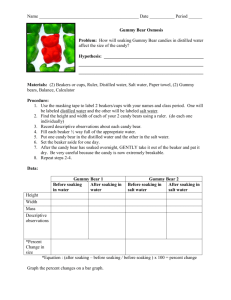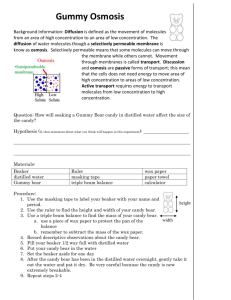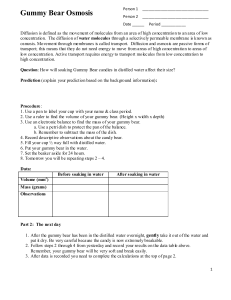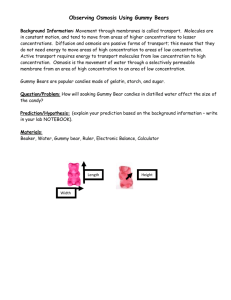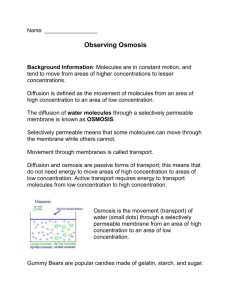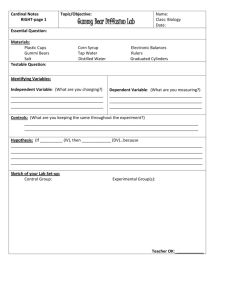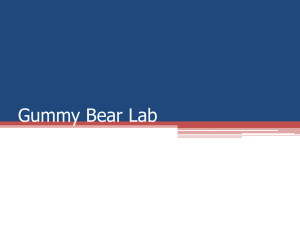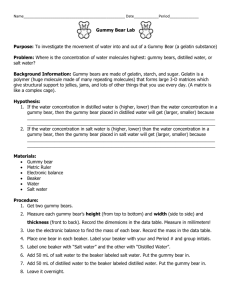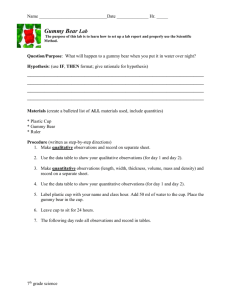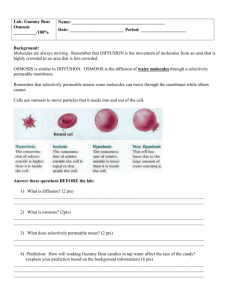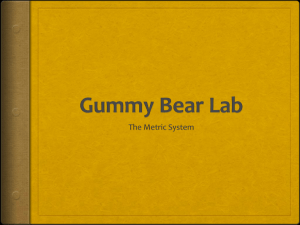Observing Osmosis
advertisement
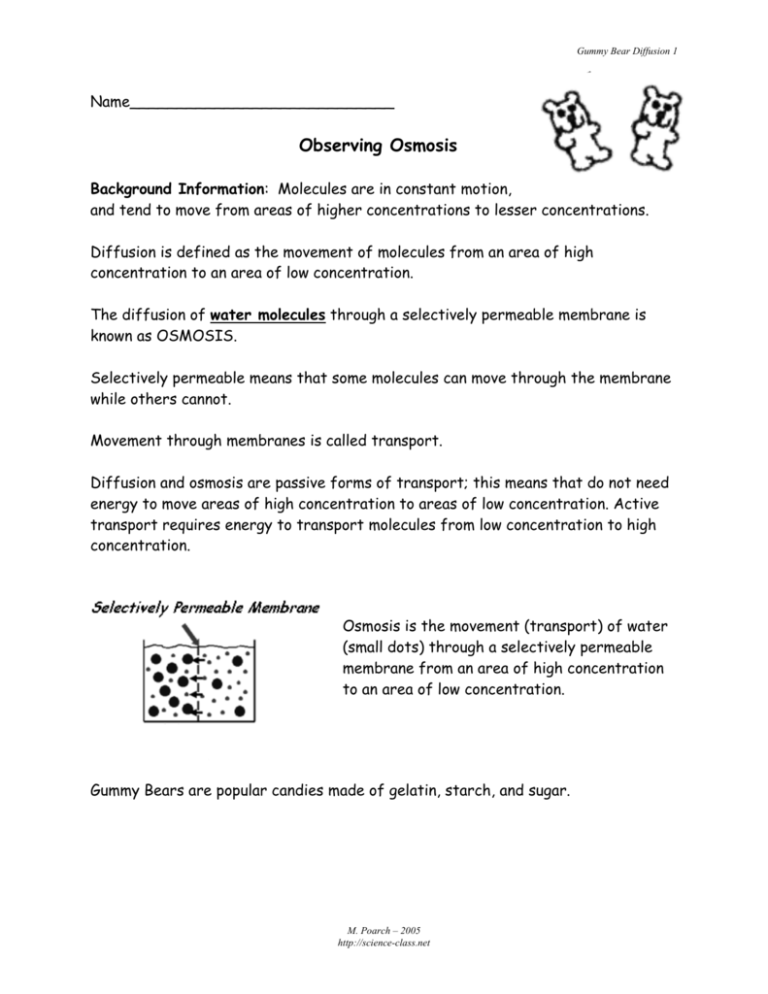
Gummy Bear Diffusion 1 Name____________________________ Observing Osmosis Background Information: Molecules are in constant motion, and tend to move from areas of higher concentrations to lesser concentrations. Diffusion is defined as the movement of molecules from an area of high concentration to an area of low concentration. The diffusion of water molecules through a selectively permeable membrane is known as OSMOSIS. Selectively permeable means that some molecules can move through the membrane while others cannot. Movement through membranes is called transport. Diffusion and osmosis are passive forms of transport; this means that do not need energy to move areas of high concentration to areas of low concentration. Active transport requires energy to transport molecules from low concentration to high concentration. Osmosis is the movement (transport) of water (small dots) through a selectively permeable membrane from an area of high concentration to an area of low concentration. Gummy Bears are popular candies made of gelatin, starch, and sugar. M. Poarch – 2005 http://science-class.net Gummy Bear Diffusion 2 Question: How will soaking Gummy Bear candies in distilled water affect the size of the candy? Prediction (explain your prediction based on the background information): ______________________________________________________________ ______________________________________________________________ ______________________________________________________________ ______________________________________________________________ Materials: Beaker Ruler Wax paper Distilled water Masking tape Paper towel Gummy bear Triple Beam Balance Calculator Procedure: 1. Use the masking tape to label your beaker with your names & class period. 2. Use the ruler to find the height & width of your candy bear. Height 3. 4. 5. 6. 7. 8. 9. Width Use a triple beam balance to find the mass of your candy bear. a. Use a piece of wax paper to protect the pan of the balance. b. Remember to subtract the mass of the wax paper. Record descriptive observations about the candy bear. Fill your beaker ½ way full with distilled water. Put your candy bear in the water. Set the beaker aside for one day. After the candy bear has been in the distilled water overnight, gently take it out of the water and pat it dry. Be very careful because the candy is now extremely breakable. Repeat steps 2 – 4. M. Poarch – 2005 http://science-class.net Gummy Bear Diffusion 3 Data: Before soaking in water After soaking in water Height Height Width Width Mass Mass Descriptive observations Descriptive observations Calculate the percent change in the size of the candy: % CHANGE IN HEIGHT = (After soaking height – Before soaking height / Before soaking height) x 100 ( _________ - _________ / ________ ) x 100 = _____% % CHANGE IN WIDTH = (After soaking width – Before soaking width / Before soaking width) x 100 ( _________ - _________ / ________ ) x 100 = _____% % CHANGE IN MASS = (After soaking mass – Before soaking mass / Before soaking mass) x 100 ( _________ - _________ / ________ ) x 100 = _____% Graph the percent changes on a bar graph. Remember to title and label both axes. M. Poarch – 2005 http://science-class.net Gummy Bear Diffusion 4 Questions & Analysis: 1. What h append to the candy after soaking in distilled water overnight? _________________________________________________________ _________________________________________________________ 2. Why did you get these results? _________________________________________________________ _________________________________________________________ M. Poarch – 2005 http://science-class.net Gummy Bear Diffusion 5 3. What do you think would happen to the candy if you let it soak in salt water overnight? Explain your answer. _________________________________________________________ _________________________________________________________ _________________________________________________________ _________________________________________________________ _________________________________________________________ _________________________________________________________ Conclusion: Write a short paragraph to explain the results of this investigation using the concept of osmosis. Include specific data to support what you say. ___________________________________________________________ ___________________________________________________________ ___________________________________________________________ ___________________________________________________________ ___________________________________________________________ ___________________________________________________________ ___________________________________________________________ ___________________________________________________________ ___________________________________________________________ ___________________________________________________________ ___________________________________________________________ M. Poarch – 2005 http://science-class.net
